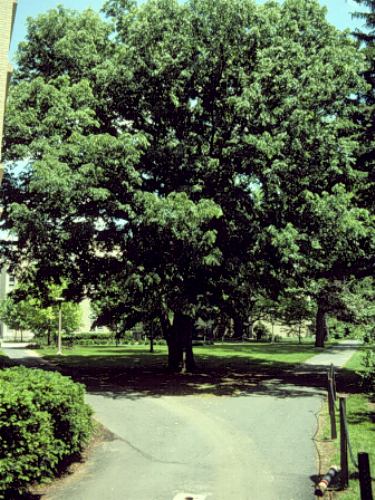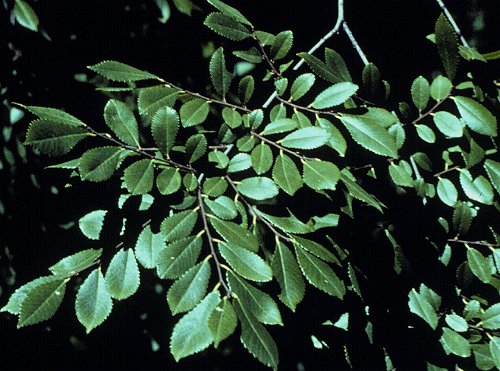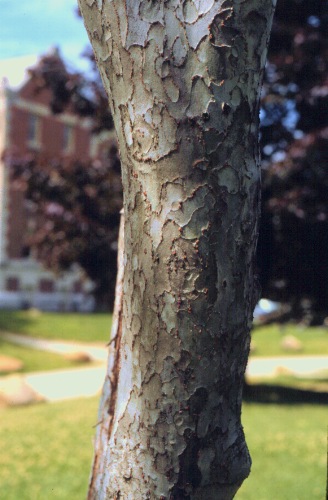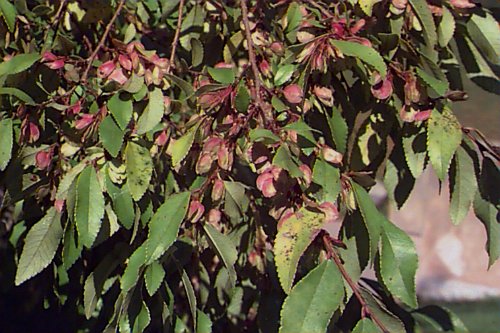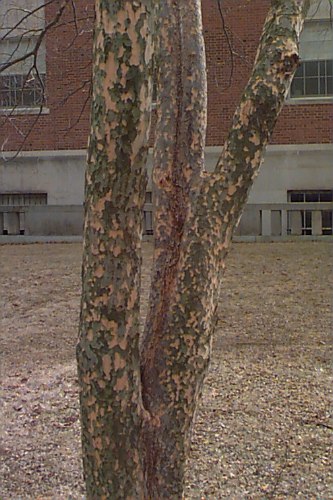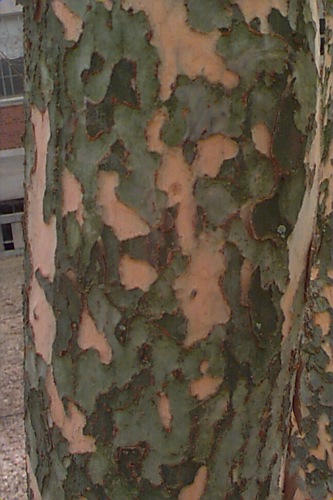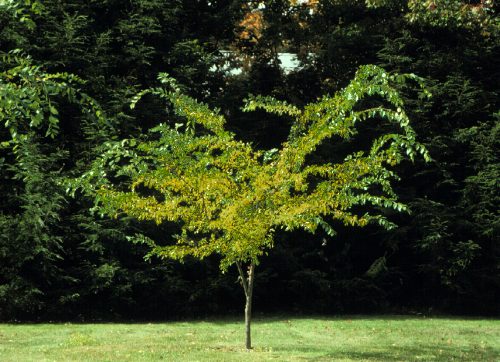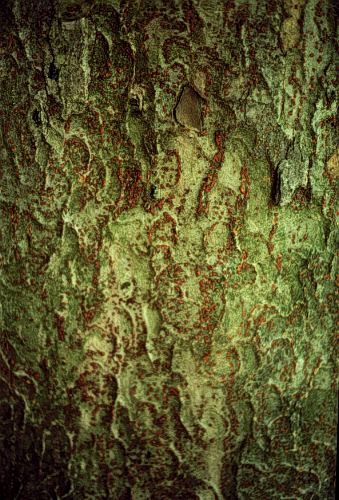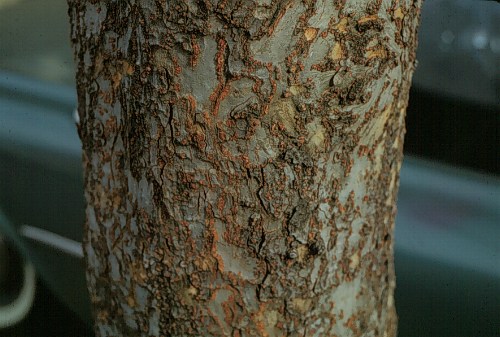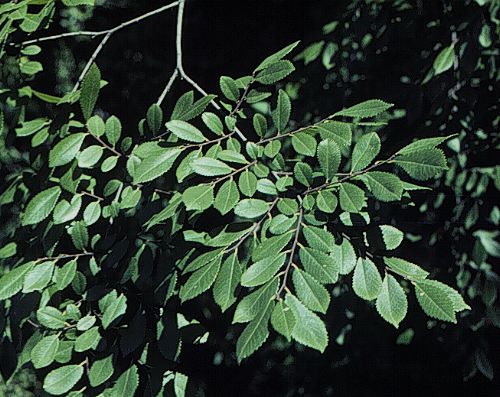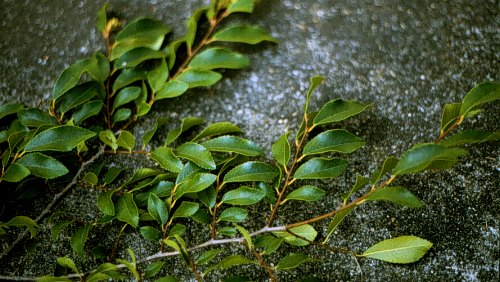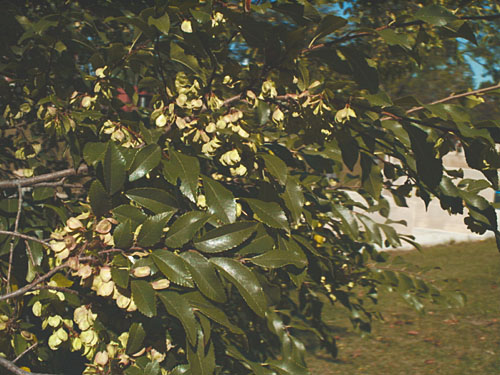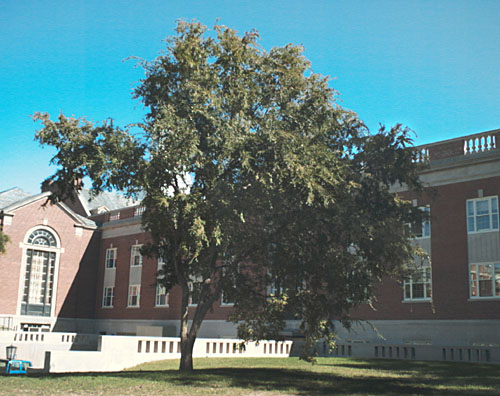Ulmus parvifolia
Lacebark Elm, Chinese Elm
Ulmaceae
ExpandHabitat
- native to northern China, Japan, and Korea
- zone 5, 4 if in protected site
Habit and Form
- deciduous tree
- broad vase-shape habit with pendulous branches
- variations in habit occur depending on seedling
- up to 50' tall and almost as wide
- fine to medium texture
- fast growth rate
Summer Foliage
- alternate leaf arrangement
- leaves are similar to U. americana, but smaller
- 0.75" to 2.25" long
- 0.33" to 1" wide
- oblique leaf base
- serrate leaf margins
- leaves have pubescent underside
- 12 or less pairs on veins, cause leaf surface to be rough
- dark green leaf color
- no terminal bud
Autumn Foliage
- turns yellowish-brown
- not ornamentally important
- better fall color in southern states
Flowers
- not of any ornamental value
Fruit
- rounded samaras
- notched at tip
- greenish red in color
- ripens in fall
- not noticeable
Bark
- personally, I feel this the plants best feature
- bark exfoliates to reveal a mixture on gray, green, orange, brown, and olive
- colors on bark are usually outlines by orange lenticels
- trunk in generally fluted at base
- stems are thin and pubescent
Culture
- easily transplanted
- pH adaptable
- prefers moist, well-drained, fertile soil
- resistant to Dutch Elm Disease
Landscape Use
- for fast growth
- for beautiful bark
- street tree
- lawn tree
Liabilities
- few insect problems
ID Features
- beautiful exfoliating bark
- samaras in fall
- slender stems with no terminal buds
- rough textured leaves
- pendulous branches
- alternate leaf arrangement
- oblique leaf base
- serrate leaf margins
- deciduous
Propagation
- cultivars, by cuttings
- by seed
Cultivars/Varieties
'A. Ross Central Park' (Central Park Splendor™, also known 'Aross/Central Park') - The product of a tree growing in New York's Central Park for 100 years, this selection will reach upwards of 60' tall with a spread of 40'. The habit is broadly-spreading, with thick, leathery deep green leaves that turn yellow in fall. The bark character is not as outstanding as other types, as it becomes fissured into plates with age.
'Burgundy' - A new selection that has not been cultivation long enough to develop data on habit, this plant is nonetheless notable for its dark green leaves which have heavy substance and turn reddish in fall. The plant grows quickly and shows good peeling bark character.
'Drake' (perhaps the same as 'Brea') - This selection is not hardy north of USDA zone 7 due to its semi-evergreen character and provenance. It should not be used in New England.
'Dynasty' - This vase-shaped, upright selection is considered inferior to the other cultivars listed here. While the fall color can be a good red, the exfoliating bark character falls far short of other forms, such as 'Emer I' and 'Emer II'. The habit and foliage also do not appear to match other forms, though the selection is very new and further observation may be warranted.
'Emer I' (Athena®, also known as 'Emerald Isle') - This selection has a rounded crown to 40' tall and 60' wide. It resists Dutch elm disease and shows very good performance under dry conditions. Its summer foliage is superior, as it shows very dark green coloration. Fall color is not very ornamental, but the pealing bark -- with its orange lenticels -- is a fine attribute.
'Emer II' (Allee®, also known as 'Emerald Vase') - Perhaps the most common of the new cultivars, this selection has been billed as a Dutch elm disease-resistant replacement for the American elm due to its upright-spreading vase shape. It grows to 70' tall with a spread of 60'. The trunk develops unusual fluting and the bark peals attractively to reveal a mosaic of earth tones. The foliage is high quality and turns yellow in autumn. The plant has performed well as a street tree in drought conditions.
'Golden Ray' (also listed as 'Golden Rey', perhaps the same as 'Aurea') - Most notable for the light yellow young leaves that appear to deepen with age, this unusual selection forms a 60' tall tree with a spread of 40'. The habit is upright-rounded, with good flaking bark habit.
'Caitlin' (also listed as 'Kaitlin') - This is a miniature selection that forms a small tree to 15' tall with peeling bark. It may not be as hardy as other cultivars. Various other dwarf forms, including selections with variegated leaves (such as 'Frosty'), are often grown by bonsai enthusiasts and specialist gardeners. They include 'Hokkaido' and 'Stone's Dwarf'.
'Prairie Shade' - This selection develops an upright-spreading crown, though the plant is so new that no mature trees exist. The summer foliage is good quality, with dark green coloration and heavy substance. However, the plant does not develop the excellent peeling bark character of other forms and has fallen prey to fungal disease. It is not in heavy nursery production and should not be chosen over other forms.
